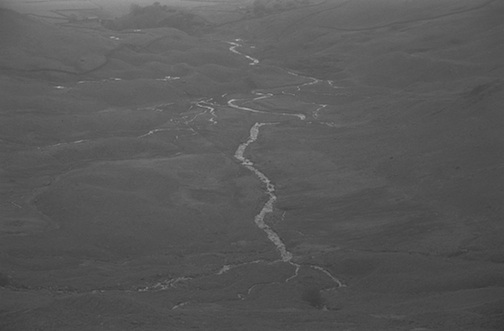Interview with BPF16 exhibitor Sam Laughlin

image: Sam Laughlin, from the series Slow Time
Sam Laughlin is currently exhibiting Selected Works in The Drawing Room at The Regency Town House, Hove as part of Brighton Photo Fringe. We ask him some questions about his influences and the new bodies of work he is exhibiting.
BPF: Can you tell us a little about your earliest experiences with photography and what drew you to the medium? What images inspired you at that time?
Sam Laughlin: The first photograph I remember taking was of my grandfather's ashes being scattered in the sea. Later I came to photography through painting, using photographs as source material. After a time I came to be more satisfied with the images than the subsequent paintings. I was inspired by such a wide range of imagery then, so it's hard to say, and it was a long time ago now. I think that as time goes on you become more critical, but at the beginning I looked at all sorts.

image: Selected Works, Sam Laughlin, The Regency Town House, BPF16
BPF: How has your relationship with photography evolved since then?
SL: Since then my relationship with photography has undergone many shifts, in my methods, the subjects I choose and how I think about the medium. Studying photography has been key to this, but I've made my best work since. If I start to feel too comfortable with what I'm making I try to challenge myself, so my relationship with photography is always evolving. The work I'm exhibiting at the Photo Fringe represents a sort of 'freeing up' and a shift towards natural subjects, after a few years of working quite rigidly for the series 'Frameworks'.
BPF: Where do you find inspiration? How do you find your ideas?
SL: Mostly from getting out into the world, but my understanding of what I see is often influenced by what I read. I do a lot of walking and have always been fascinated by the natural world, so I read natural history books and textbooks in order to better understand the things I encounter. The direction of my work tends to follow my existing interests. 'Nests' came about because my love of birds and birdwatching led me to read 'Cuckoo' by Nick Davies, the biologist who I later worked with on the series.